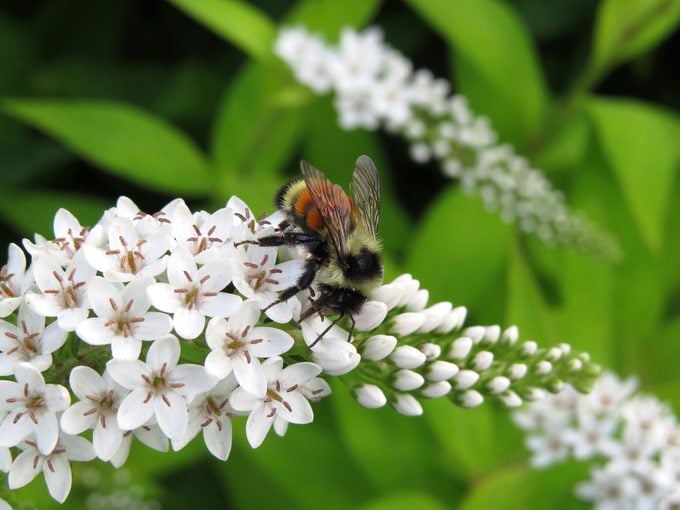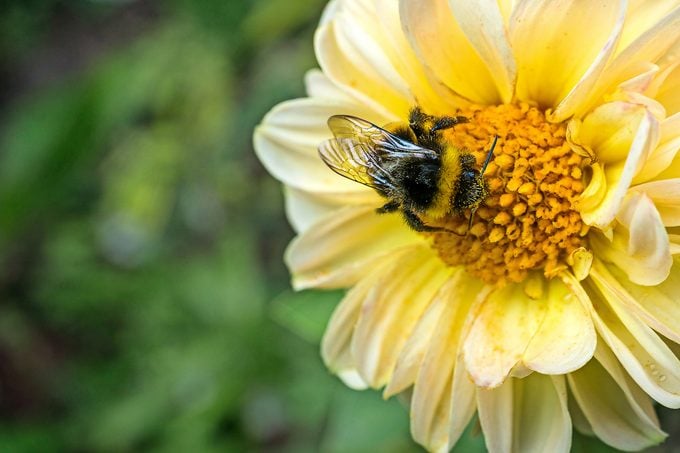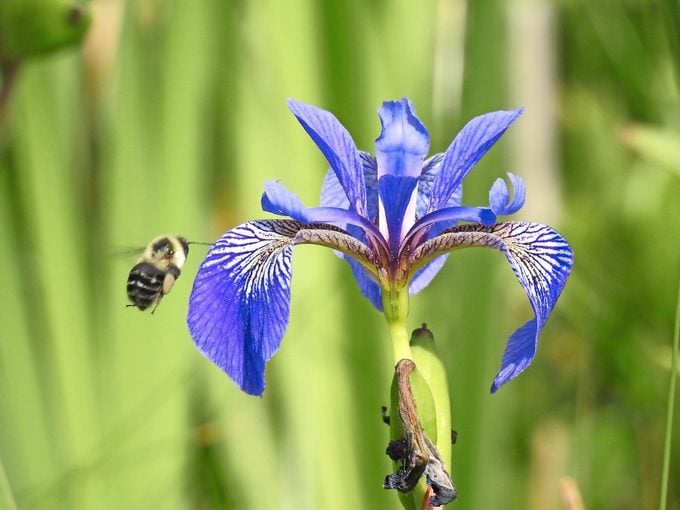9 Fascinating Bumblebee Facts You Should Know
Updated: Mar. 18, 2024
Get to know interesting bumblebee facts, including where these important pollinators live and if all bumblebees have a stinger.
On This Page
Bumblebees Are Found Around the World

It’s a big world—in fact, about 250 bumblebee species live around the globe, with more than 40 in North America.
Learn about more beneficial bees you want in your garden.
Not All Bumblebees Have a Stinger
This one of our bumblebee facts might help you feel safer. If you fret about being stung, you need only look out for two bumblebee types: the Queen and female worker bees. Males don’t have a stinger!
Should you provide drinking water for bees?
Some Bumblebees Are Endangered

The rusty patched bumblebee, which was once commonly found, has been on the U.S. Fish and Wildlife Service’s endangered list since 2017.
Discover simple ways you can help the bees.
Bumblebees Form Large Families
A bumblebee colony holds anywhere from 50 to 500 individuals. These fast fliers have big families! Each colony has a queen. Bumblebees build their nests in cavities, such as hollow trees or abandoned rodent dens underground.
Psst—these are the best flowers that attract bees.
Bumblebees Shiver to Stay Warm
In cold temperatures, bumblebees can shiver to bring their bodies to their minimum flight temperature of 86 degrees.
Here’s how to tell the difference between bees vs flies.
Bumblebees vs. Honeybees
Unlike honeybees, which were first introduced to North America from Europe in the 1600s, bumblebees are native to the continent. They do produce some honey but much less than honeybees—not enough for humans to eat.
Bumblebees Are Important Pollinators
Be kind to bumblebees—around 70% of flowering plants rely on the work done by pollinators like bumblebees.
Is the thread-waisted wasp a harmful or helpful insect?
Bumblebee Wings Beat Very Fast

A bumblebee’s wings beat about 200 times per second. That’s one busy bee!
Bumblebees Appear in Pop Culture
Bumblebees have made many appearances in popular culture — the Hasbro Transformer named Bumblebee made his first appearance in 1984.
After you finish learning about bumblebee facts, check out these natural ways to keep bees away from hummingbird feeders.
Sources
- National Wildlife Federation
- BBC.com
- Ohio State University Extension
- Smithsonian’s National Zoo & Conservation Biology Institute
- CBR (Comic Book Resources)
- U.S. Forest Service
Why Trust Us
For nearly 30 years, Birds & Blooms, a Trusted Media Brand, has been inspiring readers to have a lifelong love of birding, gardening and nature. We are the #1 bird and garden magazine in North America and a trusted online resource for over 15 million outdoor enthusiasts annually. Our library of thousands of informative articles and how-tos has been written by trusted journalists and fact-checked by bird and garden experts for accuracy. In addition to our staff of experienced gardeners and bird-watchers, we hire individuals who have years of education and hands-on experience with birding, bird feeding, gardening, butterflies, bugs and more. Learn more about Birds & Blooms, our field editor program, and our submission guidelines.





















